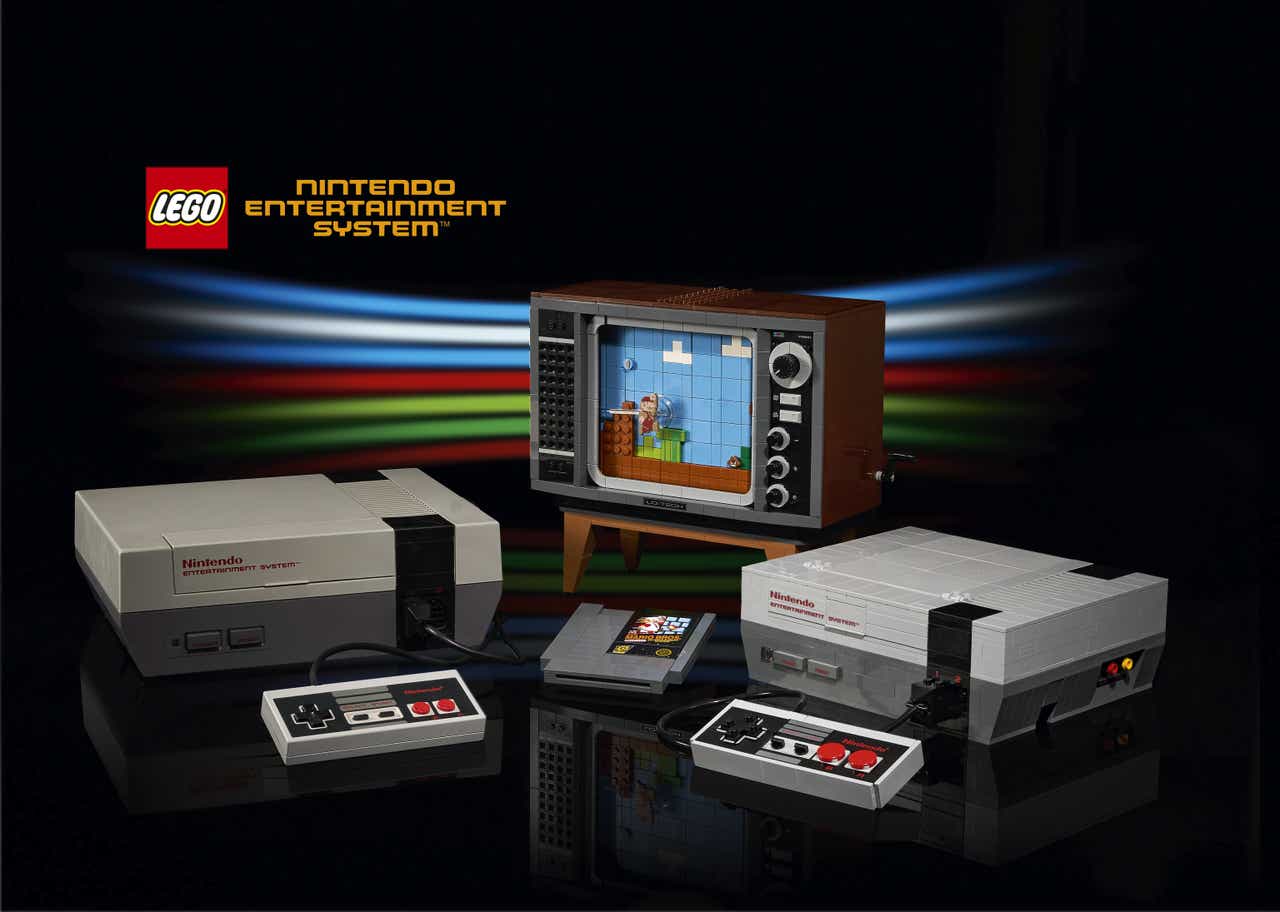Lego and Nintendo Go Big On Video Game Nostalgia
Earlier this year the Lego Group and Nintendo announced a partnership. This clearly has some intriguing possibilities. Unfortunately, the first products shown seemed to miss the potential. However, this changed with the announcement this week of a Lego set built around the classic NES.
Lego and Nintendo are two classic toy brands for kids. However, both companies have been around for so many years that they have a large and growing adult fan base. This is a major growth opportunity for the two companies.
DFC Intelligence first started talking about the idea of Nintendads back in 2004. The concept that kids from the 1980s who had the original Nintendo Entertainment System (NES) were now reaching their 30s and starting to have their own families. Nintendo now had the chance to capitalize on video game dads buying systems for their children (and yes moms too, but at the time the game audience skewed highly male). To an extent this has played out with both the Wii and the Switch.
A similar trend has been going on with Lego. Adult Fans of Legos (AFOL) is an identified demographic that is a major growth area for the company. In recent years, the growth of high-end Lego sets has soared with a wide range of products in the $200+ range.
Early this year, before COVID-19 hit, the Washington Post ran an article on this trend noting how the target market was “stressed-out adults.” Clearly this stressed-out adult market can only have grown in recent months.
It was this potential that made us so disappointed when the first product announced in March was a Lego Super Mario line. This line of simple sets is basically a toys to life product. It was similar to what Lego had tried with the now defunct Dimensions product line (a Lego Dimensions movie is scheduled this fall).
The Lego Super Mario line was not necessarily bad, it just seemed uninspiring. Furthermore, the target audience was even younger than for Lego Dimensions, seemingly 6 to 8-year olds. Considering a key challenge Lego and Nintendo face is retaining consumers as they grow out of childhood this did nothing to move the needle.
This week’s announcement was different. Lego and Nintendo announced a new set based on the classic 1980s NES. Furthermore, this is no simple Lego set. It is over 2,600 pieces and will cost $230. In other words, this decorative Lego system is in the same price range as an actual working Nintendo console.
There is some limited interaction with the new Lego Super Mario sets. The Bluetooth enabled characters from Super Mario can be used to produce classic console sounds from the NES set. However, clearly this is targeted at a much different audience. This is more what we were thinking when we heard of the Nintendo/Lego partnership.
Microsoft and Sony have a strong lock on video game consumers age 15 to 30. Nevertheless, Nintendo has a major growth opportunity in reaching consumers outside that range. Even within that teenage/young adult demographic there is a growing base of “building” consumers. These are the aging kids that grew up playing games like Minecraft and Roblox.
The challenge Microsoft and Sony face is they have focused on a more serious core gamer. Their big products focus heavily on action and mature themes like horror, survival in a post-apocalyptic world, etc. This is clearly a huge audience, but it leaves a major opening to reach consumers that want lighter themes.
Nintendo and Lego both have a big opportunity into reaching the “relaxation” consumer. These are consumers that play games for fun and are not necessarily into the competitive aspects that drive much of the core industry.
The video game industry has matured to the point where it consists of many unique segments, each with its own target audience and growth prospects. The core market of heavily competitive 15 to 30 years old gamers is huge but not growing that much. The market for gamers of all ages that want high-end products that are serious but not as intense is also huge and growing much faster.
The new Lego products launch in August. It can be expected that we will see future efforts from this partnership. It is not so much the individual sales of these products, but the fact that they are indicative of major trends in the overall video game industry.
DFC Intelligence is participating in investor calls to look at how public video game companies are likely to be impacted by COVID-19. This includes public companies with open-world games that have growth potential. Contact us for more information or to schedule a consulting call and hear our current thinking on the video gaming and digital entertainment space.



